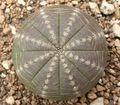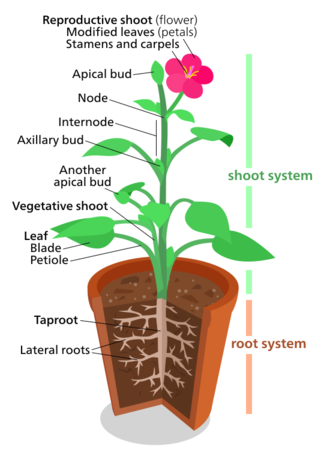علم تشكل النبات
علم تشكل النبات Plant morphology أو phytomorphology هو دراسة الشكل الطبيعي والبنية الخارجية للنبات.[1] This is usually considered distinct from plant anatomy,[1] which is the study of the internal structure of plants, especially at the microscopic level.[2] Plant morphology is useful in the visual identification of plants.
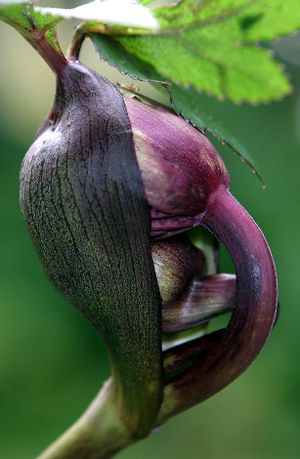
النطاق
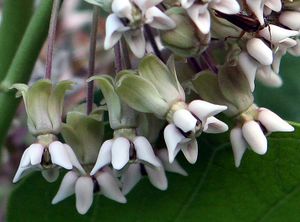
مورفولوجيا النبات إنگليزية: Plant morphology هو علم تركيب وشكل البنية النباتية. يعنى هذا العلم بالشكل الخارجي للنبات بما يشمل ارتفاع النبات وطبيعة نموه (قائم أو منتشر) ومواصفات أعضائه (الأوراق، الساق، النورات والأزهار. من الصفات التي يدرسها هذا العلم:
- شكل الأوراق.
- ترتيب الأوراق على الساق.
- وجود شعيرات أو أهداب أو أشواك على السوق أو الأوراق.
- ملمس الأوراق وسماكتها ولونها.
- ووجود علامات مميزة على الساق أو الأوراق.
- طبيعة النورة وتموضعها ومواصفاتها.
- عدد الأزهار على النورة.
- لون الأزهار.
- طرق التكاثر.
علم مقارن
A plant morphologist makes comparisons between structures in many different plants of the same or different species. Making such comparisons between similar structures in different plants tackles the question of why the structures are similar. It is quite likely that similar underlying causes of genetics, physiology, or response to the environment have led to this similarity in appearance. The result of scientific investigation into these causes can lead to one of two insights into the underlying biology:
- Homology - the structure is similar between the two species because of shared ancestry and common genetics.
- Convergence - the structure is similar between the two species because of independent adaptation to common environmental pressures.
Understanding which characteristics and structures belong to each type is an important part of understanding plant evolution. The evolutionary biologist relies on the plant morphologist to interpret structures, and in turn provides phylogenies of plant relationships that may lead to new morphological insights.
Homology
Convergence
Astrophytum asterias, a cactus.
Vegetative and reproductive characteristics
Plant morphology treats both the vegetative structures of plants, as well as the reproductive structures.
The vegetative (somatic) structures of vascular plants include two major organ systems: (1) a shoot system, composed of stems and leaves, and (2) a root system. These two systems are common to nearly all vascular plants, and provide a unifying theme for the study of plant morphology.
By contrast, the reproductive structures are varied, and are usually specific to a particular group of plants. Structures such as flowers and fruits are only found in the angiosperms; sori are only found in ferns; and seed cones are only found in conifers and other gymnosperms. Reproductive characters are therefore regarded as more useful for the classification of plants than vegetative characters.
Use in identification
Morphology in development
Plant development is the process by which structures originate and mature as a plant grows. It is a subject studies in plant anatomy and plant physiology as well as plant morphology.
Growth
Morphological variation
Evolution of plant morphology
Positional effects
Juvenility
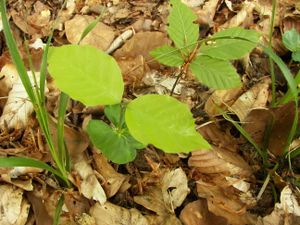
Modern morphology
انظر أيضاً
- List of plant morphology terms
- Portal:plants
- Plant anatomy
- Plant identification
- Plant physiology
- Plant evolutionary developmental biology
- Taxonomy
- Simulated growth of plants
References
- ^ أ ب Raven, P. H., R. F. Evert, & S. E. Eichhorn. Biology of Plants, 7th ed., page 9. (New York: W. H. Freeman, 2005). ISBN 0-7167-1007-2.
- ^ Evert, Ray Franklin and Esau, Katherine (2006) Esau's Plant anatomy: meristems, cells, and tissues of the plant body - their structure, function and development Wiley, Hoboken, New Jersey, page xv, ISBN 0-471-73843-3

